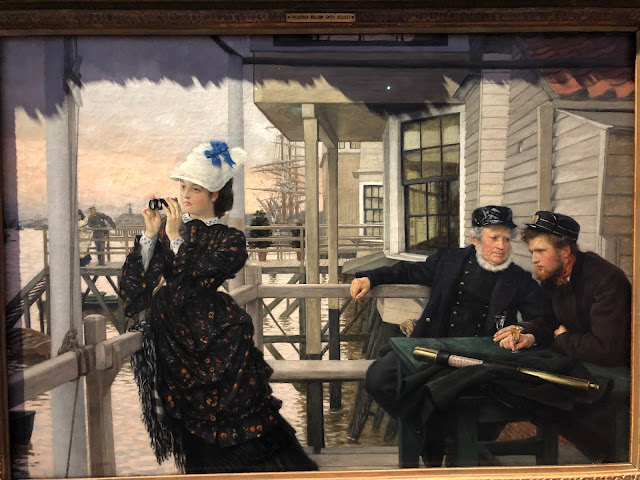When I first started looking at the various ages and sequences of art during the two-hundred-year history of the railway, I was particularly taken by narrative art. In a railway context, this began with the Victorian Social Realists. The ability to tell an intriguing story through a single image, or maybe via two related pictures, can involve a degree of deduction and speculation that simply increases the interest of the piece.
On our recent visit to Bournemouth, we discovered by chance
that the Russell-Cotes Gallery was featuring an exhibition entitled Telling
Tales: The Story of Victorian Narrative Art, until March 2023. I had already
come across James Tissot, who produced a few paintings in a railway setting,
though I had not seen this offering before - The Captain’s Daughter: The Last
Evening [1873], from Southampton City Art Gallery, which was being used to advertise
the overall display.
As the accompanying blurb said, Narrative art “draws in the emotions of the viewer….and makes us feel involved”. The same can be said of the two paintings by Solomon, also brought in from elsewhere and that are very definitely railway related, First Class: The Meeting and Second Class: The Parting [both 1854]. Poole Museum had “Level Crossing, Poole” by Eustace Nash [c.1920s], described as a new acquisition and which – though more recent - arguably comes into the same category.




No comments:
Post a Comment